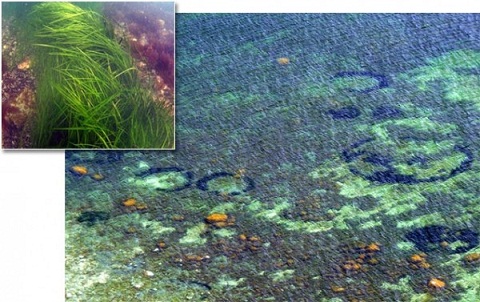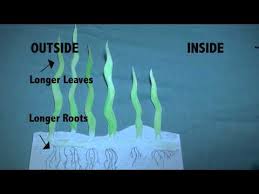Distinct fairy rings comprising of narrow fringes of eelgrass expand radially over the base of chalk plates outside calcium carbonate cliffs of island of Møn, Denmark. Performed the survey to estimate possible description for formation of rings and, more specially, for apparent die-off of eelgrass shoots on inner side of the rings. Fairy rings were equal to 15 m in diameter comprising of 0.3- to 1-m-wide zones of sea grass shoots at densities of equal to 1,200 shoots m−2 and rooted in up to 10-cm-thick sediment layer. On outer side, shoots extended over bare chalk plates. On inner side, shoots were smaller, had lesser absolute and exact leaf growth, shoot density was lower and sediment corroded leaving exposed chalk with scattered boulders behind.

Residue organic matter and nutrients and tissue nutrient fillings were not dissimilar surrounded by positions. Sediment pools of acid volatile sulphides and chromium-reducible sulphur augmented from outer to middle positions of rings, and so did total sulphur content of eelgrass tissues, as tissue δ34S isotope ratios, in spite of position in fringes, were low reflecting substantial invasion of sulphide from sediment. Neither clonal development pattern of eelgrass, residue burial of shoots, hydrodynamic forcing nor nutrient limitation could describe ring-shaped pattern. We conclude that most probable description should be discovered in invasion of eelgrass shoots by toxic sulphide collecting in sediment due to low iron availability in carbonate-rich environment.
Scientists have damaged a completely good mystery off the coast of Denmark—weird circles spotted on ocean floor are not so mysterious after all, in spite of their pet name of "fairy rings." Nor are they developed by World War II bombs or aliens, two of more interesting theories. No, as Nature World News describes, the rings are in fact developed by "toxic mud," or at least mud that is toxic to eelgrass. The Danish scientist found that seabed near circles has high levels of sulphide, probably because of runoff from local farms.
That sulphide would usually get cleaned deeper out to sea, but it gets trapped by eelgrass near coast, much the way "trees trap soil on the exposed hillside. Last piece of puzzle: Eelgrass tends to grow in circular models, with older, weaker plants in centre. Those are the ones which tend to die because of sulphide, and " result is the exceptional circular form, where only rim of circle survives—like fairy rings in lawn. The lawn rings are generally described by fungi. The mystery may be described, but scientists say it increases the significance of protecting seagrass in general, main part of marine ecology.
There are few mysterious circles, or else called as fairy rings, on floor of Baltic Ocean. Though, conspiracy theorists will be disappointed as, according to biologists, they are not developed by either aliens or fairies. Danish scientists claim this occurrence is just poison and nothing more.

Rings of green eelgrass, a few of them equal to 49 feet wide, can be observed at times below clear waters off the coast of Denmark's island of Mn. First images of such fairy rings were occupied back in 2008 by tourists, and again in 2011. As then, people have attempted to describe what these rings represent, even spawning assumptions that they were located there by aliens and or fairies.
Though, researchers at University of Southern Denmark and University of Copenhagen, had different take on matter, one that is far from false notion, paranormal or anything that is not of this world.
Neither bomb craters or landing marks for aliens has relation with it. Nor with fairies, who in old days got blame for similar occurrences on land, fairy rings in lawns being well known example.
Although it might resemble the kind of seaweed, eelgrass is in fact a flowering plant. And when it grows, it develops outward in all directions, developing circle-shaped colonies. As healthy adult eelgrass plants appear to be able to endure sulphide in their environment, old plants at heart of colonies drop dead. The result is the outstanding circular shape, where only rim of circle stays alive like fairy rings in lawn.